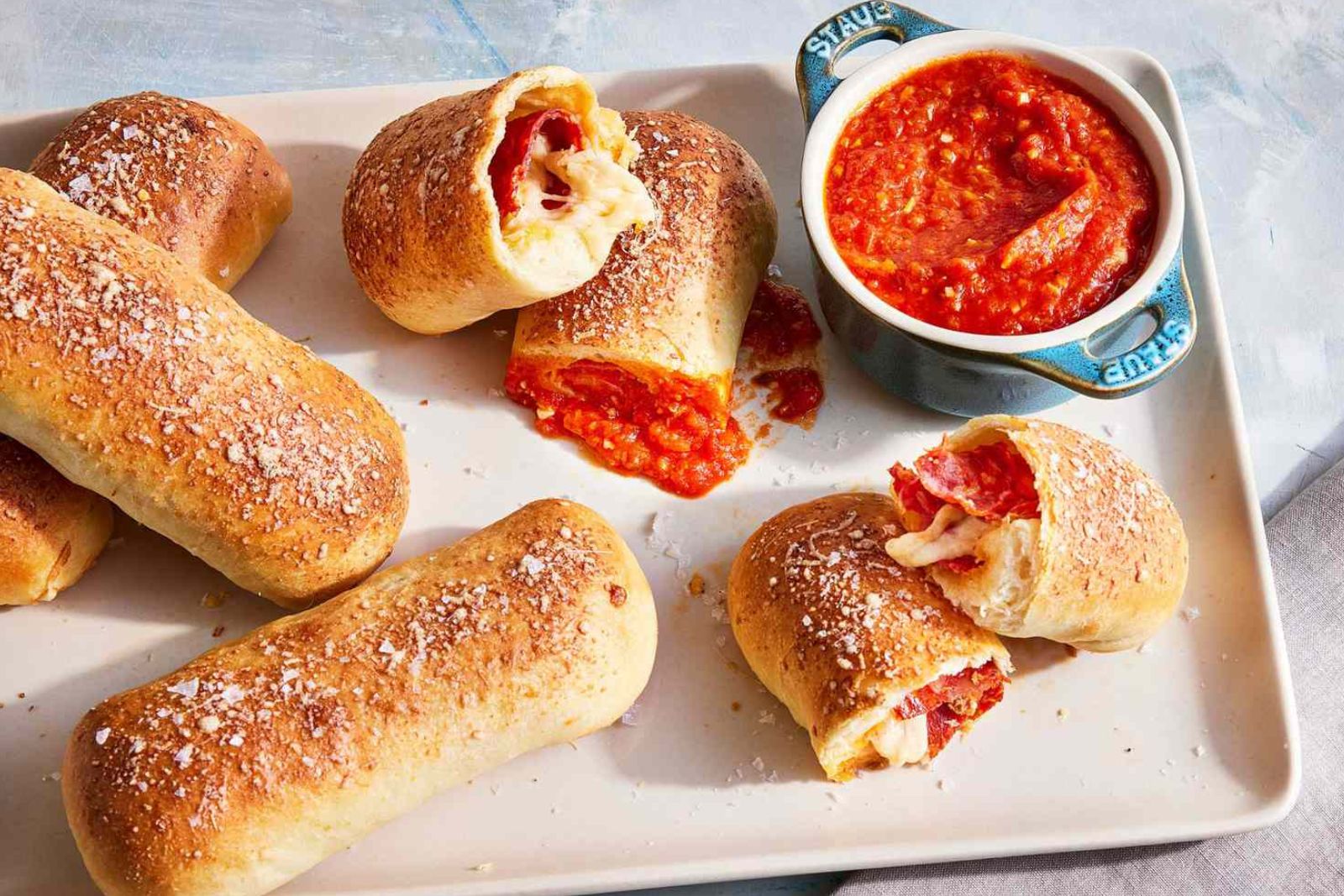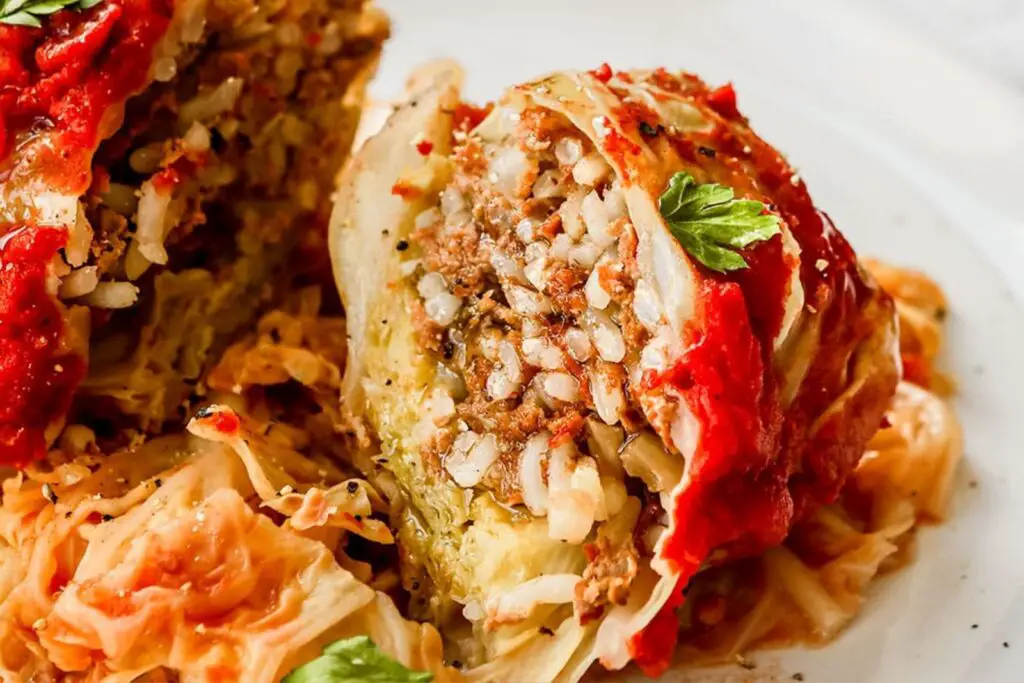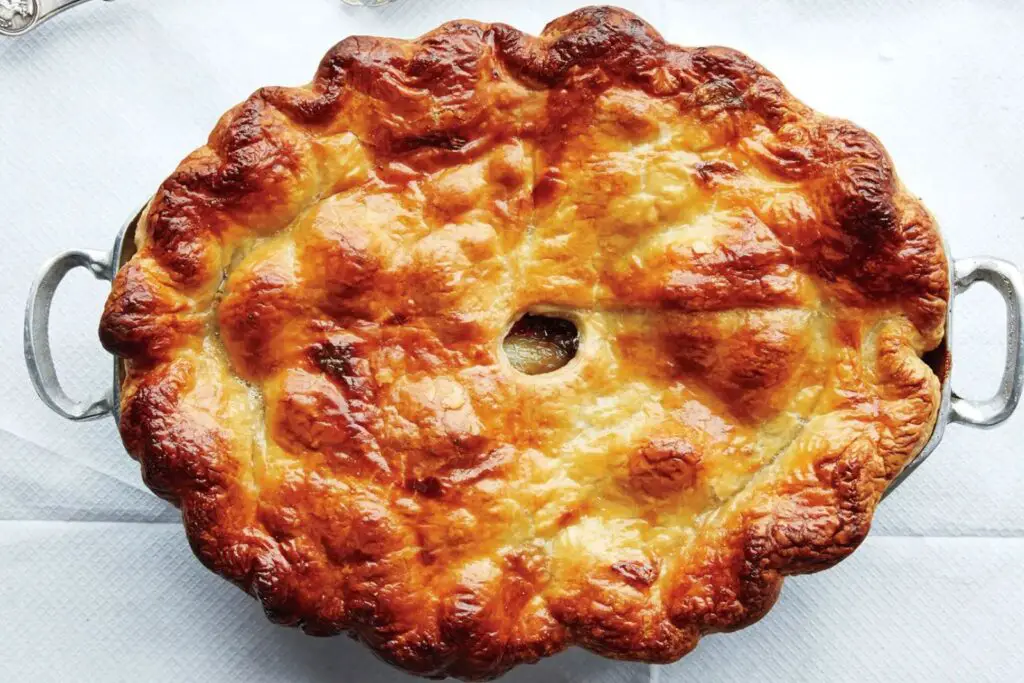
Pepperoni rolls are delicious and savory baked goods filled with pepperoni and sometimes cheese or other ingredients. They are a popular snack or meal option for many people, loved for their portability and flavorful taste. If you have a batch of freshly made or store-bought pepperoni rolls and want to preserve them for later enjoyment, freezing is an excellent option. Freezing pepperoni rolls properly will help maintain their taste, texture, and overall quality. This article presents a step-by-step guide on how to freeze pepperoni rolls to ensure they stay delicious when you’re ready to indulge in them.
Here’s a comprehensive guide on freezing pepperoni rolls:
Step 1: Choose freshly baked or store-bought pepperoni rolls
Selecting high-quality, freshly baked or store-bought pepperoni rolls is crucial for successful freezing and maintaining the best taste and texture. Here’s why this step is important:
- Freshness: Freshly made pepperoni rolls will have the best flavor and texture. When rolls are freshly baked, they are at their peak in terms of taste and quality. The ingredients are still vibrant, and the crust is likely to be crispy. If you choose store-bought rolls, look for ones that are well within their sell-by or best-before date to ensure they are fresh and tasty.
- Optimal Texture: Freezing can affect the texture of baked goods, including pepperoni rolls. By starting with rolls that are soft and have the right level of moisture, you increase the chances of them thawing with a more enjoyable texture. Older or stale rolls might become mushy or lose their original consistency during freezing and thawing.
- Safety Concerns: Using pepperoni rolls that have been sitting out for an extended period, especially if they were not properly stored, can pose food safety risks. Bacteria can grow rapidly at room temperature, leading to potential foodborne illnesses. Always freeze the rolls as soon as possible after they are baked or purchased to maintain food safety.
- Prevention of Spoilage: If the pepperoni rolls have passed their expiration date, it’s best not to freeze them. Freezing won’t reverse the spoilage process, and the rolls are likely to deteriorate further during freezing and thawing, resulting in an unpleasant taste and potentially causing health issues.
Step 2: Allow the rolls to cool
Allowing the freshly baked pepperoni rolls to cool completely before freezing is a crucial step in the freezing process. Here’s why it’s essential to let the rolls cool:
- Retaining Shape: When bread products like pepperoni rolls are taken out of the oven, they are still hot, and the internal structure is somewhat delicate. Cooling the rolls allows the structure to set and firm up, ensuring they retain their shape during freezing. If you were to freeze the rolls while they are still hot, they might collapse or become misshapen, leading to an unappetizing appearance.
- Avoiding Sogginess: Allowing the rolls to cool before freezing helps prevent excess moisture from forming during the freezing process. Warm bread releases steam, and if trapped inside the packaging during freezing, it can cause sogginess or create ice crystals on the surface of the rolls. Cooling the rolls first minimizes the risk of sogginess and preserves their desired texture when thawed and reheated.
- Preventing Bacterial Growth: Placing hot or warm food directly into the freezer can raise the temperature of the freezer compartment, which might encourage bacterial growth in other frozen items. Cooling the rolls before freezing ensures that they won’t compromise the safety of other foods in the freezer.
- Efficiency in Freezing: Cooling the pepperoni rolls to room temperature before freezing also helps in maintaining the overall quality of the rolls. The freezing process is more efficient when the food starts at a lower temperature, ensuring that the rolls freeze evenly and quickly.
To cool the pepperoni rolls properly, place them on a wire rack or a clean, cool surface after taking them out of the oven. Allowing them to cool at room temperature for at least an hour is recommended. Once cooled, you can proceed to wrap them individually and place them in the freezer for long-term storage.
Should I pre-slice the pepperoni rolls before freezing them?
It’s not necessary to pre-slice the pepperoni rolls before freezing. Freezing the rolls whole helps retain their moisture and prevents them from drying out during storage. You can slice them after reheating when they are at their freshest.
Can I add sauce to the pepperoni rolls before freezing them?
It’s better to avoid adding sauce to the pepperoni rolls before freezing, as sauces can affect the texture and quality during freezing and thawing. If you want to enjoy the rolls with sauce, consider adding it after reheating to maintain the best taste and consistency.
Step 3: Wrap each roll individually
Individually wrapping each pepperoni roll tightly in plastic wrap is a crucial step in the freezing process. Here’s why it’s important and how it helps preserve the quality of the rolls:
- Protection against Freezer Burn: Freezer burn occurs when the surface of frozen food is exposed to air, leading to dehydration and oxidation. It can result in a change in texture, color, and flavor of the food. By wrapping each roll individually in plastic wrap, you create a protective barrier that prevents air from coming into direct contact with the rolls, significantly reducing the risk of freezer burn.
- Maintaining Freshness: Plastic wrap provides an airtight seal around each pepperoni roll, locking in their freshness and flavors. It prevents the rolls from absorbing odors from other foods in the freezer, ensuring that they maintain their original taste and aroma even after prolonged freezing.
- Preserving Texture: Pepperoni rolls have a delicate and fluffy texture when freshly baked. Individual wrapping helps retain this desirable texture during freezing by preventing excess moisture loss. It also prevents the rolls from becoming too moist, as plastic wrap acts as a moisture barrier, keeping the rolls at an optimal moisture level.
- Easy Portion Control: Individually wrapped rolls offer the convenience of portion control. When you want to enjoy a pepperoni roll, you can simply take out the number of rolls you need without having to defrost the entire batch. This way, you can minimize waste and preserve the quality of the remaining rolls.
To wrap the pepperoni rolls individually, follow these steps:
- Cut a piece of plastic wrap large enough to fully enclose each roll.
- Place a single pepperoni roll on the plastic wrap and wrap it tightly, making sure there are no gaps or exposed areas.
- Twist the ends of the plastic wrap to secure the roll completely.
- Repeat the process for each individual roll, ensuring they are wrapped separately.
Once the rolls are individually wrapped, place them in a freezer-safe container or resealable plastic bag for additional protection. Be sure to remove as much air as possible from the container or bag before sealing it.
Step 4: Place wrapped rolls in a freezer-safe container
Placing the individually wrapped pepperoni rolls in a freezer-safe container or resealable plastic bag is a crucial step in the freezing process to ensure the rolls remain in optimal condition. Here’s why it’s essential and how it helps preserve the quality of the rolls:
- Additional Protection: Freezer-safe containers and resealable plastic bags provide an extra layer of protection for the pepperoni rolls. Even though the rolls are individually wrapped, placing them in a container or bag adds another barrier against air and moisture, reducing the risk of freezer burn and helping to maintain their freshness.
- Organization: Using a freezer-safe container or bag allows you to organize the frozen rolls more efficiently. You can stack the rolls neatly, maximizing the use of space in the freezer and preventing them from getting squished or damaged by other items in the freezer.
- Prevention of Odor Transfer: Freezers can sometimes have various foods with strong odors. By storing the pepperoni rolls in a separate container or bag, you prevent them from absorbing any unwanted smells, preserving their distinct flavor and preventing flavor cross-contamination.
- Air Removal: Removing as much air as possible from the container or plastic bag before sealing it is essential to prevent freezer burn. Freezer burn occurs when moisture in the food turns into ice crystals due to exposure to air. By eliminating excess air, you reduce the chance of freezer burn and ensure the rolls retain their original taste and texture.
To remove air from a resealable plastic bag, you can use the water displacement method:
- Place the wrapped pepperoni rolls into the bag, leaving some space at the top.
- Seal the bag almost entirely, leaving a small opening.
- Submerge the bag in a container of water, ensuring the water pushes out all the air from the bag.
- Once the air is removed, seal the bag completely.
- Alternatively, you can use a vacuum sealer to achieve a more effective air removal process.
Step 5: Label the container or bag
Labeling the freezer-safe container or bag with the current date is a crucial step in the freezing process for several reasons:
- Tracking Freezer Time: By adding the date to the label, you create a record of when the pepperoni rolls were frozen. This is especially important for foods with limited freezer storage time. By knowing the freeze date, you can keep track of how long the rolls have been in the freezer, helping you to use them within a safe and optimal time frame.
- Ensuring Freshness: While frozen foods can remain safe to eat indefinitely as long as they are stored properly, their quality can start to decline over time. By labeling the container or bag, you can monitor the duration of freezing and prioritize consuming the pepperoni rolls while they are at their best quality. This ensures that you enjoy the rolls when they still taste as delicious as they did when first frozen.
- Preventing Food Waste: Properly labeling frozen items helps you avoid unnecessary food waste. If you have multiple batches of frozen pepperoni rolls or other items in the freezer, knowing their freeze date allows you to consume the oldest ones first, reducing the risk of forgetting about them and having to discard them later due to prolonged storage.
- Planning and Organization: Labeling the container or bag with the date allows for better meal planning and organization. You can plan your meals based on the oldest frozen rolls, making sure they are used before newer batches. This practice helps you efficiently manage your frozen food inventory and prevents items from being forgotten or overlooked in the freezer.
When labeling the container or bag, use a waterproof marker or a label sticker to ensure the date remains visible and doesn’t smudge over time. Include the month, day, and year of freezing so that the information is clear and easily understandable.
For example, if you froze the pepperoni rolls on July 25, 2023, the label should read “Frozen: 07/25/2023.”
Step 6: Store in the freezer
Storing the labeled container or bag of pepperoni rolls in the freezer is the final step in the freezing process. Proper storage in the freezer is essential to maintain the quality and safety of the rolls during their time in frozen storage. Here’s why it’s important and how to do it correctly:
- Maintaining Quality: The freezer is designed to keep food at a consistently low temperature, which halts bacterial growth and helps preserve the quality of the frozen items. By storing the pepperoni rolls in the freezer, you ensure that their taste, texture, and appearance are retained until you’re ready to consume them.
- Preventing Contamination: Placing the rolls in a labeled container or bag helps protect them from potential contamination by other foods in the freezer. The sealed container or bag keeps the rolls isolated, preventing any odors or flavors from other frozen items from affecting their taste and quality.
- Even Freezing: It’s crucial to place the rolls in a single layer in the container or bag to allow for even freezing. When items are frozen in a single layer, the cold air in the freezer can circulate around them more efficiently, ensuring they freeze quickly and uniformly. This helps prevent the formation of large ice crystals, which can negatively impact the texture of the rolls.
To store the pepperoni rolls in the freezer:
- Ensure that the container or bag is properly labeled with the freeze date (“Frozen: MM/DD/YYYY”).
- Arrange the individually wrapped pepperoni rolls in a single layer inside the container or bag. Make sure to leave a little space between each roll to allow for air circulation.
- If using a bag, gently press out any excess air before sealing it tightly. If using a container, ensure the lid is securely closed.
It’s a good idea to place the container or bag on a flat surface in the freezer for a few hours until the rolls are frozen solid. Once they are fully frozen, you can rearrange the rolls or store them as needed.
Remember that the ideal temperature for the freezer is 0°F (-18°C) or below. Keeping the freezer at the proper temperature ensures that the pepperoni rolls stay safely frozen and maintain their quality.
How long can I store frozen pepperoni rolls?
Frozen pepperoni rolls can be safely stored for up to 2-3 months. After this time, the quality may start to decline, and freezer burn becomes more likely. Be sure to label the freeze date on the container or bag for easy tracking.
Step 7: Thaw and Reheat the Frozen Pepperoni Rolls
Thawing and reheating frozen pepperoni rolls properly is essential to ensure they taste just as delicious as when they were freshly made. Here’s why these steps are crucial and how to do them correctly:
Thawing in the Refrigerator:
- Thawing the frozen pepperoni rolls slowly in the refrigerator is the safest method. Thawing at room temperature or using a microwave can lead to uneven thawing and may promote bacterial growth. By thawing the rolls in the refrigerator overnight, you allow them to defrost at a controlled and safe temperature, preserving their texture and taste.
- To thaw the pepperoni rolls in the refrigerator, remove the container or bag from the freezer and place it in the refrigerator on a plate or a shallow tray to catch any potential drips. Thawing time may vary depending on the size and thickness of the rolls, but overnight thawing should be sufficient.
Reheating in the Oven:
- The oven is the preferred method for reheating the thawed pepperoni rolls, especially if you desire to maintain their crispy texture. Preheating the oven to around 350°F (175°C) ensures even and gentle reheating without overcooking the rolls.
- To reheat the thawed pepperoni rolls in the oven:
- Preheat your oven to the specified temperature.
- Remove the thawed rolls from the container or bag and place them on a baking sheet lined with parchment paper or aluminum foil. Leaving a little space between the rolls ensures even heating.
- Warm the rolls in the preheated oven for about 10 minutes or until they are heated through. The exact time may vary depending on the size and thickness of the rolls, so keep an eye on them to avoid overcooking.
Reheating in the Microwave (Alternative):
- If you’re short on time, you can use the microwave to reheat the thawed pepperoni rolls. However, keep in mind that using the microwave may result in a softer texture compared to the oven method.
- To microwave the thawed pepperoni rolls:
- Place a few rolls on a microwave-safe plate, leaving space between them.
- Microwave the rolls on a low or medium power setting for short intervals, checking them frequently to prevent overheating.
- Take caution not to over-microwave the rolls, as they can become soggy or rubbery if heated for too long.
Other related questions
Can I refreeze pepperoni rolls?
Refreezing pepperoni rolls is generally not recommended due to quality and safety concerns. Each time food is frozen and thawed, its texture and taste may degrade. Moreover, multiple freeze-thaw cycles can increase the risk of bacterial growth and compromise food safety. To maintain optimal taste and texture, it’s best to freeze pepperoni rolls only once after they’ve been freshly made or purchased, and consume them promptly after thawing.
How do I know if the pepperoni rolls have gone bad after being frozen?
To determine if frozen pepperoni rolls have gone bad, look for signs of spoilage such as a foul odor, off-color, or unusual texture. If the rolls appear moldy, slimy, or have an off-putting taste, they should not be consumed and must be discarded. When in doubt, prioritize safety and avoid consuming any frozen food that shows signs of deterioration or has been stored for an extended period beyond recommended freezer storage times.
Can I freeze pepperoni rolls with cheese?
Yes, you can freeze pepperoni rolls with cheese. Follow the same steps for freezing as outlined in the blog post. The cheese may undergo slight texture changes upon thawing, but the rolls should remain safe to eat and delicious.
Can I freeze homemade pepperoni rolls with other toppings?
Yes, you can freeze homemade pepperoni rolls with other toppings, such as vegetables or different types of meats. Just ensure the additional ingredients are fresh and cooked before assembling the rolls and follow the same freezing process as outlined in the blog post.
Can I freeze pepperoni rolls that were previously refrigerated?
It’s not advisable to freeze pepperoni rolls that have already been refrigerated, as the quality may suffer. Freezing after refrigeration can cause textural changes and compromise taste. For best results, freeze pepperoni rolls immediately after baking or purchasing.
Can I freeze leftover pepperoni rolls from a restaurant or takeout?
While freezing leftover pepperoni rolls is possible, the quality may vary depending on how they were originally stored. If the rolls were left out at room temperature for an extended period before refrigeration, it’s best to avoid freezing them to prevent potential food safety risks. For the best outcome, freeze homemade or freshly purchased rolls.








